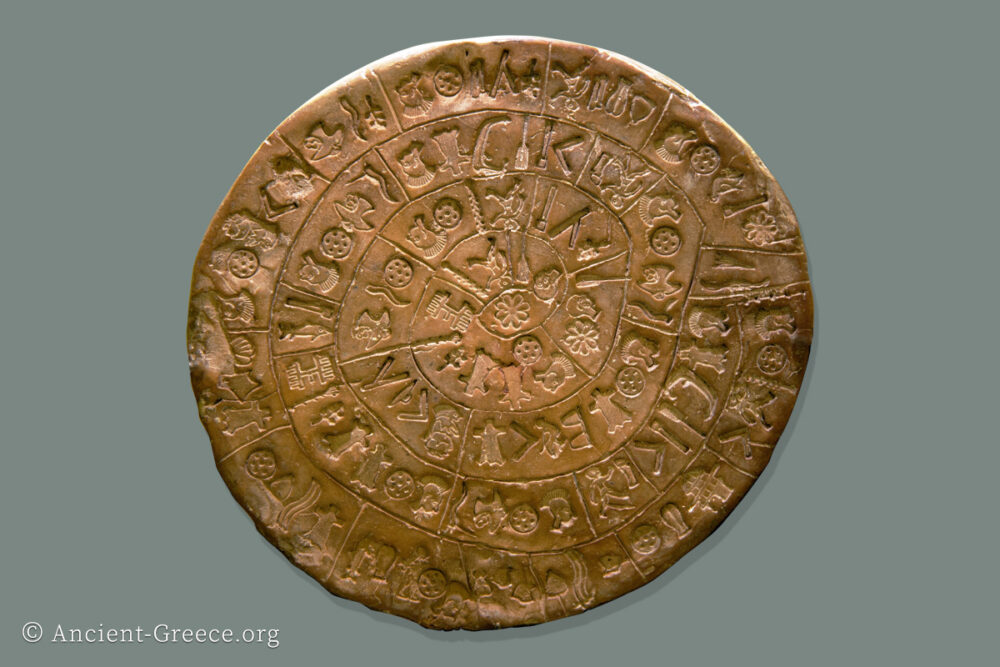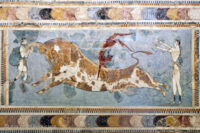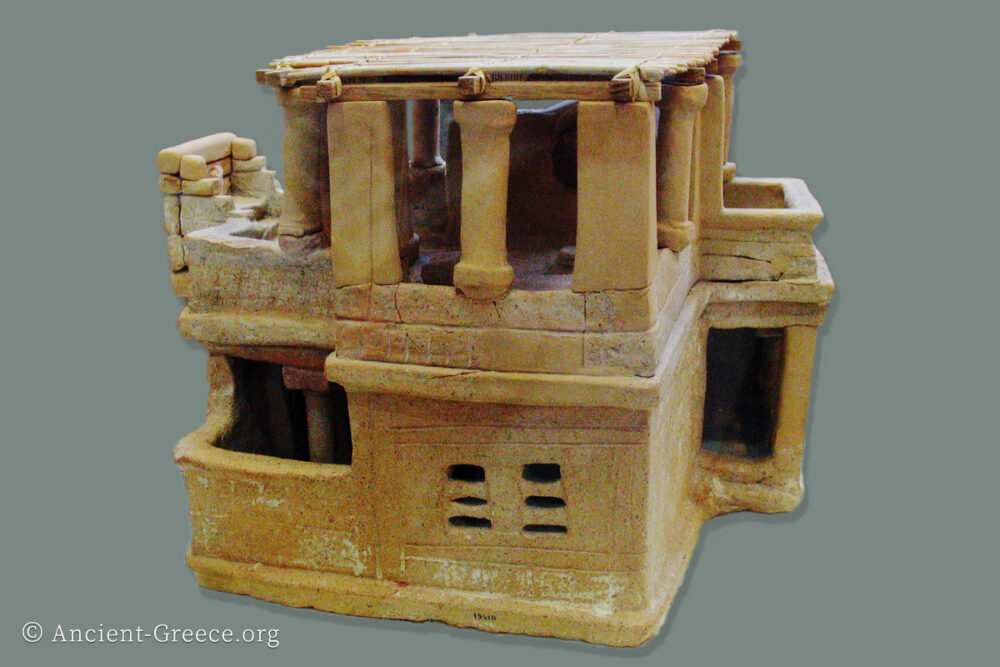
On this page:
Language
The Phaistos Disk is the earliest, and only script of its kind we have from the Minoans. It is dated to 1700 BCE and resembles Egyptian hieroglyphs. Around the same time, or soon after, a syllable based script we call Linear A permeates the island. Numerous tablets of Linear A have been found, mostly in palace and villa excavations. Neither the Phaistos Disk nor Linear A have been deciphered as of this writing (2025), so it is difficult to speculate about their content or origin.
Linear B, the script used by the Mycenaeans was also used in Crete during the later Minoan times. Linear B was deciphered in 1953 and shown to be a primitive form of Greek. Most of the tablets found have been translated to contain inventories of goods in storage, and do shed some indirect light into the life of a prosperous society.


Religion
Religion played an important role in Minoan Crete and many activities and artistic products revolved around religious cult. As evidence in the art of the period, the Minoans deified the natural world and thrived in its logical order that allowed man to live in harmony with the natural environment.

Ritual celebrations usually took place in sacred caves, on sanctuaries on mountain peaks, and in the palaces and villas which all had their own sanctuaries. Animal and bloodless sacrifices, along with processions were part of ritual worship of the great female nature goddess, and during these festivities worshipers used music, dance, and prayer to achieve a state of religious ecstasy that put them in touch with the supernatural.
The sacrifice of the bull, and games like the “taurokatharpsia” that revolved around the animal, were central part of the Minoan religious festivals, symbolizing perhaps man’s interaction with powerful natural elements, and ultimately his triumph over them through skill and power.
Some of the ritual objects that have been unearthed during excavations around Crete include the bull mask, the double axe, and the bull horns.
Minoan Art
Through their interaction with other civilizations of the middle east, the Minoans practiced the art of metalworking.
The skill of the Minoan metal smiths was renown in the ancient world, and many artisans worked abroad in mainland Greece and the Aegean islands. It appears that the Mycenaeans learned the art of inlaying bronze with gold from the Minoans.
Minoan jewelry adorned the collections of noble palace inhabitants and were even exported around the Mediterranean. Excavations have unearthed a plethora of intricate gold artifacts, along with an assortment of copper instruments that date back to 2300 BC.
Copper was a much sought after commodity during this time, but it does not appear naturally in Crete. Most likely the Minoans imported copper from Cyprus.

Minoan architecture exhibits complexity, utility, and visual appeal unseen in Europe hitherto. Minoan palaces organized various buildings around a large central courtyard and acted both as storage of goods and as a community hub.
The art of the Minoans speak of a society of joyous disposition, in touch with their environment, and in awe of the logical order of the natural world. Above all, the unearthed artifacts reveal a people who had developed a high degree of self-respect and a keen eye for observing and adopting to their physical environment.





